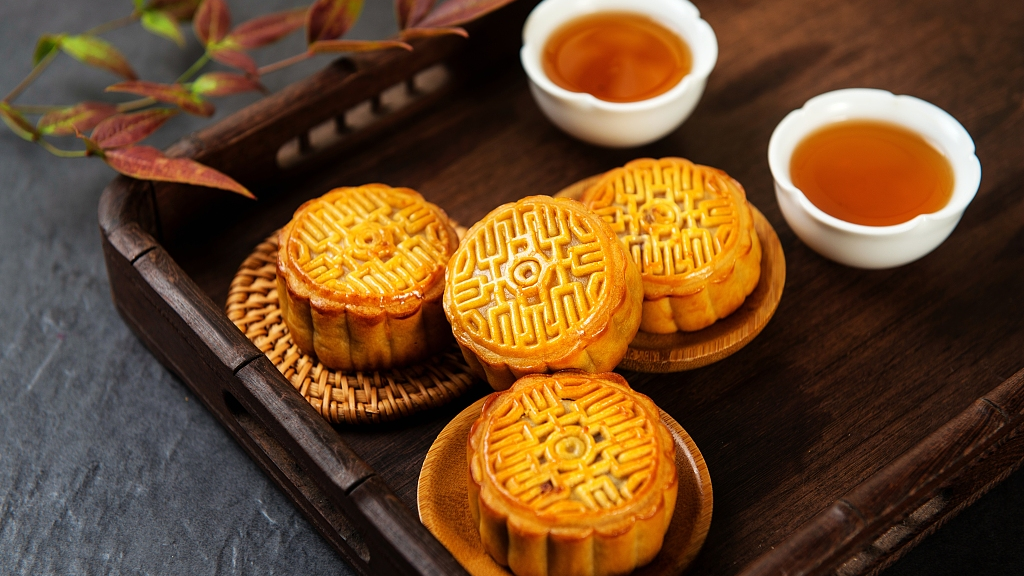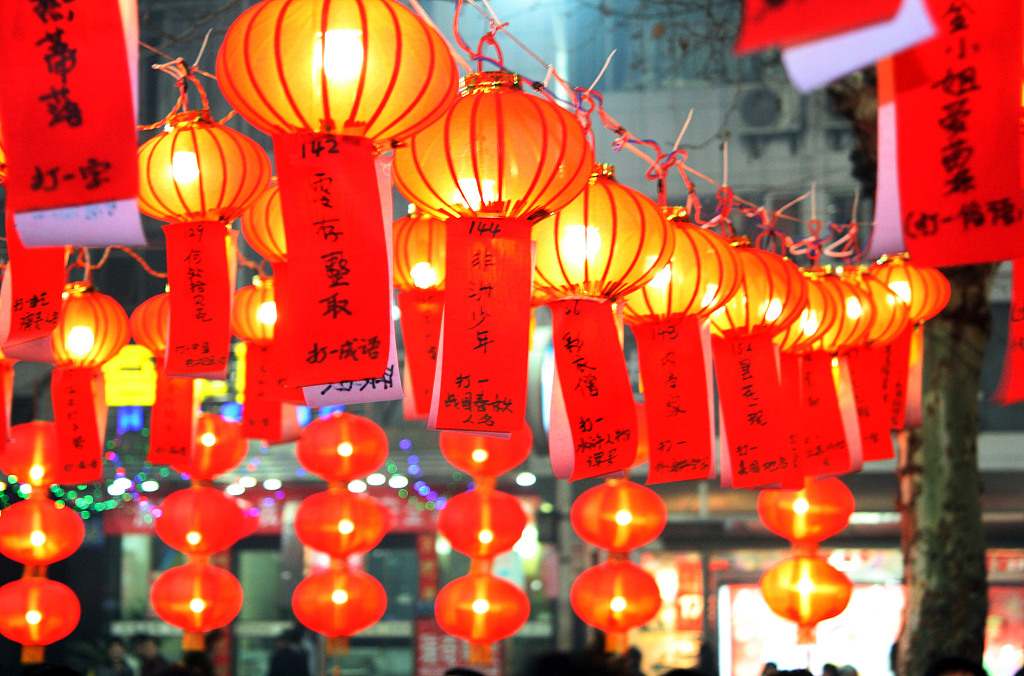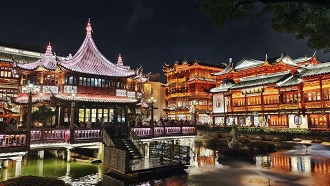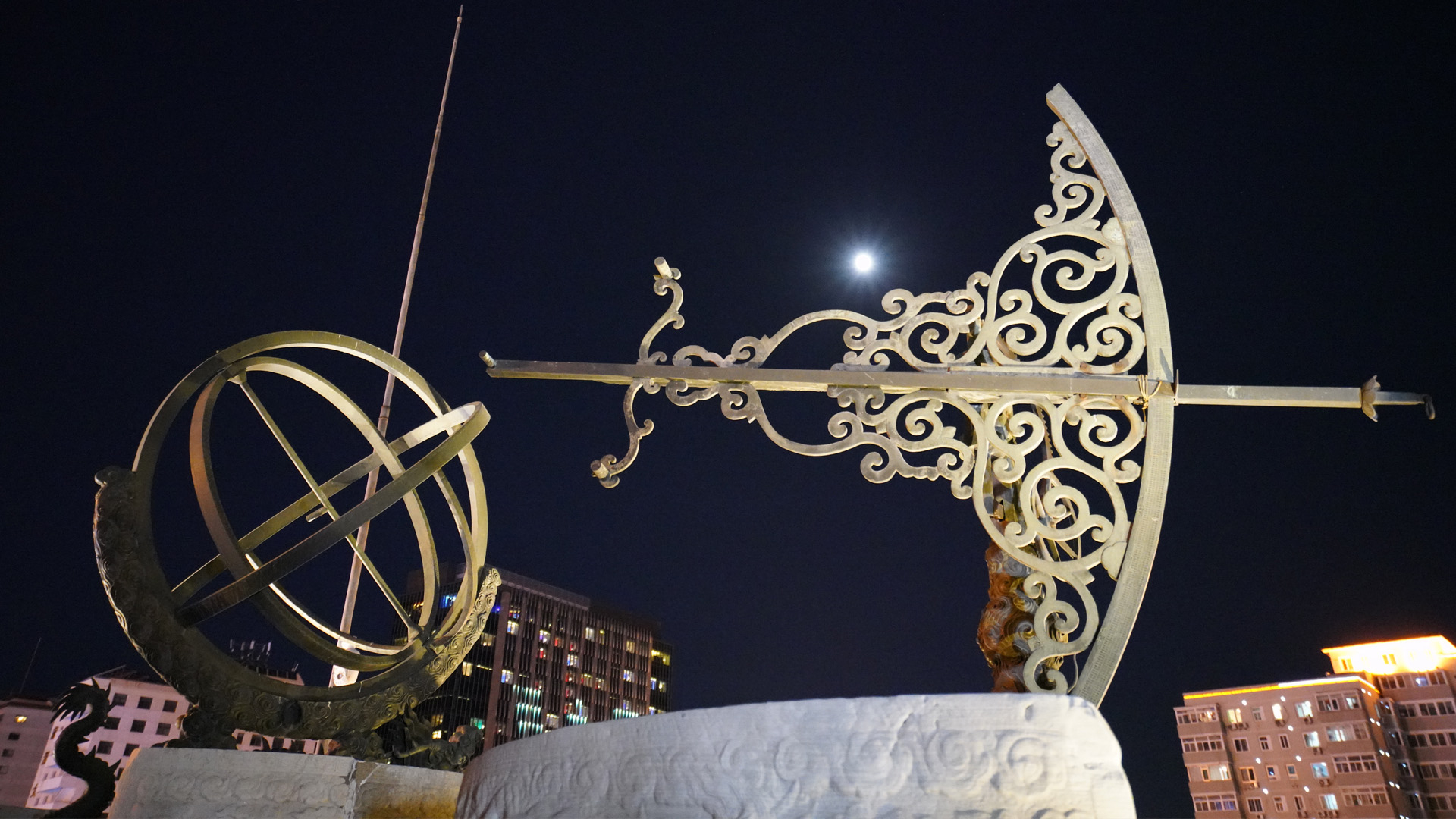The Chinese civilization has a long and continuous history stretching back to antiquity. Chinese President Xi Jinping made this remark at a meeting on cultural inheritance and development on June 2, 2023 in Beijing, and said that a comprehensive and profound understanding of that history is essential to promoting the creative transformation and development of fine traditional Chinese culture more effectively, and to developing modern Chinese civilization.
As prominent features of Chinese civilization, Xi emphasized the importance of unity: "Its unity determines fundamentally that the various ethnic cultures of the Chinese nation are integrated and rally closely together, even when faced with major setbacks, and that a strong and unified country is the pillar upon which the well-being of all Chinese people depends."

A file photo shows mooncakes presented on a tray. /CFP
A file photo shows mooncakes presented on a tray. /CFP
Carrying desires for unity, the Mid-Autumn Festival enjoys a rich historical and cultural connection with Chinese people. Over the past decade, Xi Jinping has celebrated the "Mid-Autumn Time" with people.
On September 23, 2015, upon the arrival of the Mid-Autumn Festival, Xi Jinping attended a welcome reception hosted by overseas Chinese in Seattle, United States, and talked about feelings of missing home and loved ones at this reunion time. He brought mooncakes for the local Chinese community, conveying the goodwill of people in China.

A file photo shows the moon hanging in the sky above a pavilion in Jilin. /CFP
A file photo shows the moon hanging in the sky above a pavilion in Jilin. /CFP
A few days later, Xi and his wife Peng Liyuan spent a special Mid-Autumn Festival with overseas Chinese representatives from the eastern United States at the United Nations headquarters in New York.

A file photo shows lantern riddles lit up during a Mid-Autumn Festival celebration in China. /CFP
A file photo shows lantern riddles lit up during a Mid-Autumn Festival celebration in China. /CFP
As family reunions are always an important element of Mid-Autumn Festival, family banquets are often the highlight of the festival. On August 30, 2013, Xi Jinping visited a community in Shenyang, Liaoning Province, where the community holds the "Hundred Family Banquet" every Mid-Autumn Festival. Xi showed his appreciation for this tradition, saying that it was a great way to bring everyone together. Xi also expressed his regret that he could not savour the delicious culinary delights since the festival had not arrived yet when he was there.
As one of China's important forms of intangible cultural heritage, Mid-Autumn Festival is not only a time for celebrating the harvest and for family reunions, but also an opportunity for cultural inheritance.
The festival's emphasis on family values, the spirit of reunion, and the reverence for the moon are all important components of traditional Chinese culture. Through the Mid-Autumn Festival, people can gain an insight into the essence of this culture and pass down its virtues.

A file photo shows a lantern festival in Yu Garden in Shanghai attracting many tourists during the Mid-Autumn Festival. /CFP
A file photo shows a lantern festival in Yu Garden in Shanghai attracting many tourists during the Mid-Autumn Festival. /CFP
Every year during the Mid-Autumn Festival, regions across China organize a range of themed activities to promote cultural heritage. Traditional activities like moon-gazing and eating mooncakes, which have a history of thousands of years, continue to be cherished. Other customs such as tide-watching, lantern lighting, riddle-solving, and enjoying both osmanthus flowers and the moon have become classic folk traditions in various parts of China.
Xi said the cultural missions in the new era are to further advance cultural prosperity, to build a leading country in culture and to foster the modern Chinese civilization.
Furthermore, at the meeting on cultural inheritance and development in June this year, Xi Jinping pointed out: "At this new starting point, we must continue to promote cultural prosperity, build a culturally strong nation, and construct a modern civilization for the Chinese nation. This is our new cultural mission in the new era."
As times change, the ways of celebrating traditional festivals like the Mid-Autumn Festival have become more diverse and modern.

A file photo shows the over-500-year-old observatory at night in Beijing. /CGTN
A file photo shows the over-500-year-old observatory at night in Beijing. /CGTN
In 2018, the over-500-year-old observatory in Beijing that was previously closed to the public, opened at night, providing a rare opportunity to see the full moon up close via its telescope.
In tourist cities like Xiamen and Hangzhou, Mid-Autumn carnivals and other events attract large numbers of tourists. During this year's Mid-Autumn Festival, Xiamen will launch a Mid-Autumn-themed carnival, which will include moon-viewing at sea, bus tours and other themed activities. These festivities not only help preserve the cultural traditions of Mid-Autumn Festival, but also promote the prosperous development of China's cultural and tourism markets.